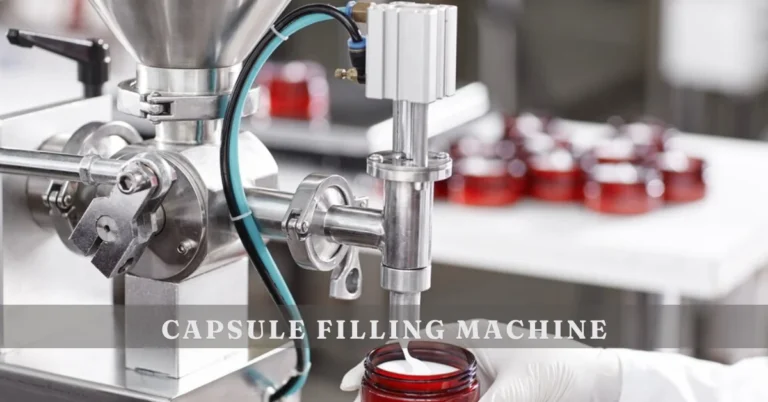Introduction to Capsule Filling Machines
The world of pharmaceuticals and nutraceuticals is rapidly evolving, and at the heart of this transformation lies an essential piece of equipment: the capsule filling machine. Whether you are a small startup or an established enterprise, understanding your options in capsule filling technology can significantly impact your production efficiency.
With choices ranging from semi-automatic to fully automated machines, selecting the right one for your needs requires careful consideration. Each type comes with its unique features, benefits, and challenges that could either streamline your operations or complicate them.
Let’s delve into the nuances between semi-automatic and full automatic capsule filling machines. By exploring their functionalities, advantages, and considerations for selection, you’ll be well-equipped to make an informed decision that aligns with your business goals.
Semi-Automatic Capsule Filling Machines: How They Work and Their Benefits
Semi-automatic capsule filling machines offer a balanced approach to production. They’re ideal for businesses that require flexibility without sacrificing efficiency.
These machines operate with user intervention, allowing operators to control the process while benefiting from automation’s precision. Typically, users load empty capsules and fill them manually or semi-manually with the desired substance. The machine then seals the capsules, ensuring consistency in dosage and quality.
One significant advantage is versatility. Semi-automatic models cater to various formulations, making them suitable for small-scale operations or niche markets. This adaptability can save companies time and resources when switching between products.
Additionally, they often have a lower initial investment compared to fully automated systems. For smaller manufacturers or startups, this cost-effectiveness means they can enter the market more easily while still maintaining high standards of production quality.
Full Automatic Capsule Filling Machines: Features and Advantages
Full automatic capsule filling machines are designed for efficiency and precision. They handle the entire production process with minimal human intervention. This automation reduces labor costs significantly.
These machines come equipped with advanced technology, allowing for quick changeovers between different capsule types and sizes. Users can easily adjust settings through digital interfaces, enhancing overall usability.
One major advantage is consistency in dosage. Full automation ensures that each capsule contains exactly the right amount of product, minimizing variability and waste.
Additionally, these machines often feature high-speed operation capabilities, enabling manufacturers to increase output without compromising quality.
Maintenance becomes simpler as well due to self-cleaning mechanisms built into many models. This not only saves time but also ensures compliance with hygiene standards.
The combination of speed, accuracy, and lower operational costs makes full automatic capsule filling machines an attractive option for businesses aiming for scalability in their production processes.
Factors to Consider When Choosing Between Semi and Full Automation
Choosing between semi-automatic and full automatic capsule filling machines involves several key factors.
First, assess your production volume. If you have high output demands, a fully automatic machine may be the better choice for efficiency. Semi-automated systems work well for smaller operations or niche products where flexibility is essential.
Next, consider labor costs. Fully automated machines reduce the need for extensive human involvement, which can lead to savings over time. However, if skilled operators are available and costs are manageable, semi-automation might suffice.
Another aspect is space availability in your facility. Full automation often requires more room due to larger machinery and additional components.
Think about maintenance requirements. Fully automated systems can offer advanced features but may require specialized knowledge for upkeep compared to their semi-automatic counterparts that allow easier access for routine checks and repairs.
Cost Comparison of Semi and Full Automation
When evaluating the cost of semi-automatic versus full automatic capsule filling machines, several factors come into play.
Semi-automatic machines typically have a lower initial investment. They require less sophisticated technology and are often easier to maintain. This makes them appealing for small to medium-sized operations.
On the other hand, full automation comes with a higher price tag upfront. However, this option can significantly reduce labor costs over time. With minimal manual intervention required, companies can allocate their workforce more efficiently.
Operational expenses also differ markedly between the two types. Full automatic systems usually consume more energy but offer faster output rates. Thus, while they may seem expensive initially, their efficiency can translate to long-term savings.
Businesses must assess their production needs and budget constraints when deciding which path to take in investing in a capsule filling machine.
Case Studies: Companies Using Semi vs. Full Automation
Several companies have adopted semi-automatic and full automatic capsule filling machines, each with distinct outcomes.
A small herbal supplement brand saw success with a semi-automatic machine. This allowed them to maintain control over the process while scaling production gradually. They appreciated the flexibility in adjusting their formulations without significant downtime.
In contrast, a large pharmaceutical company opted for full automation. Their operations demanded high output and consistent quality across thousands of batches daily. The investment paid off through minimized labor costs and enhanced efficiency, proving crucial during peak production periods.
Another example is a nutraceutical startup that experimented with both systems. Initially using semi-automation helped them understand market demand before transitioning to fully automated solutions as orders skyrocketed.
Each case showcases different paths driven by unique business needs and goals within the industry.
Future of Capsule Filling Technology: Predictions and Innovations
The future of capsule filling technology is poised for remarkable advancements. With the rise of automation, machines are becoming more efficient. Enhanced precision in dosing will lead to better product consistency.
Smart technology integration is on the horizon. Imagine capsule filling machines that can adjust settings autonomously based on real-time data analytics. This could revolutionize production lines.
Sustainability is also a key focus area. Companies are exploring eco-friendly materials for capsules and packaging, reducing environmental impact while maintaining quality.
Moreover, personalized medicine trends may drive innovations in capsule design and formulation processes. As patient-specific treatments gain traction, adaptable machines could emerge to meet unique needs rapidly.
Artificial intelligence will continue shaping operations too. Predictive maintenance using AI algorithms could minimize downtime and optimize performance significantly across industries utilizing these technologies.
Conclusion
The world of capsule filling machines is evolving rapidly. As manufacturers seek efficiency and quality, the choice between semi-automatic and fully automatic systems becomes crucial. Each option has unique characteristics that cater to different production needs.
Companies looking for a balance between cost-effectiveness and automation may find semi-automatic machines more appealing. They offer flexibility and require less initial investment while still delivering reliable performance.
On the other hand, full automatic capsule filling machines provide unmatched speed and consistency. They are designed for high-volume manufacturers who prioritize productivity above all else.
As technology advances, we can expect innovations that will further enhance both types of machines. From smart sensors to improved software integration, these developments will likely make capsule filling processes even more efficient in the coming years.
Choosing the right capsule filling machine ultimately depends on specific business goals, production volume, budget constraints, and desired level of automation. The landscape is rich with options tailored to meet diverse needs in this ever-evolving industry.
FAQs
Q: What is the main difference between semi-automatic and full automatic capsule filling machines?
Ans: Semi-automatic machines require manual input for some processes, while full automatic machines handle all stages of capsule filling without human intervention.
Q: Which capsule filling machine is better for small-scale production?
Ans: A semi-automatic capsule filling machine is ideal for small-scale production due to its lower cost and flexibility.
Q: Are full automatic capsule filling machines more accurate?
Ans: Yes, full automatic machines generally provide higher precision and consistency, making them suitable for large-scale production.
Q: How does production volume influence the choice of capsule filling machines?
Ans: Higher production volumes typically benefit from full automatic machines due to their speed and efficiency, while lower volumes suit semi-automatic options.
Q: What should I consider when choosing a capsule filling machine?
Ans: Consider factors like production volume, budget, desired precision, and the reliability of the machine manufacturer.

